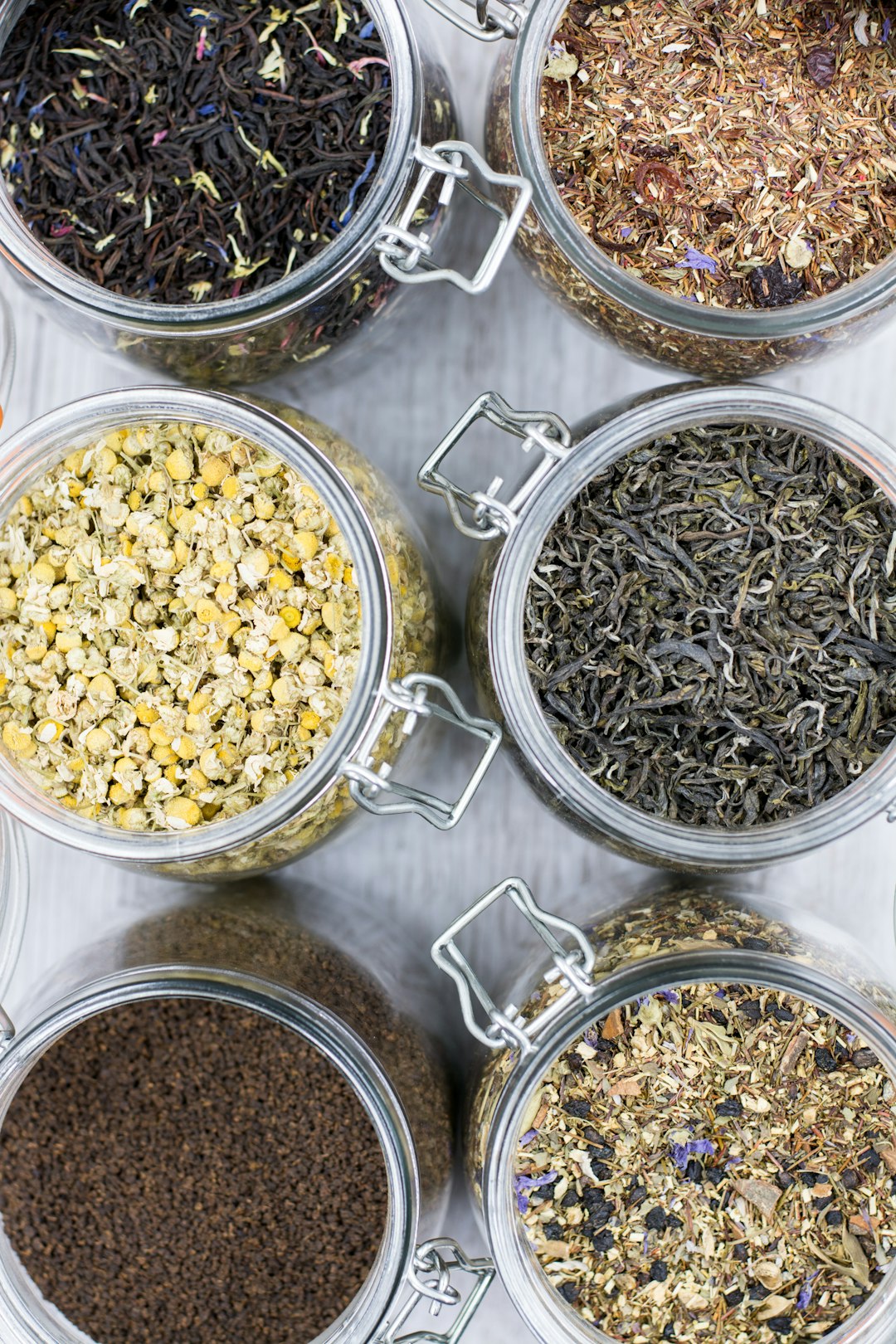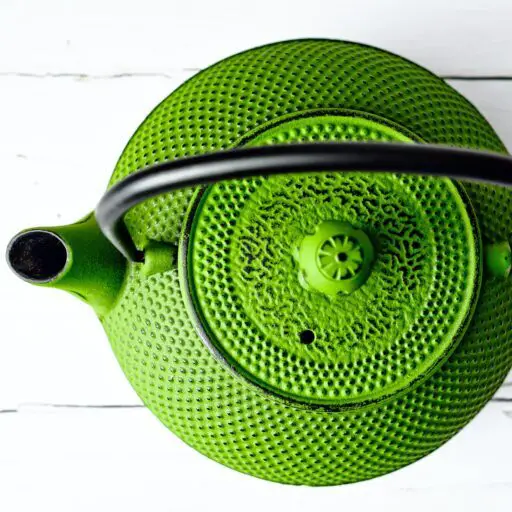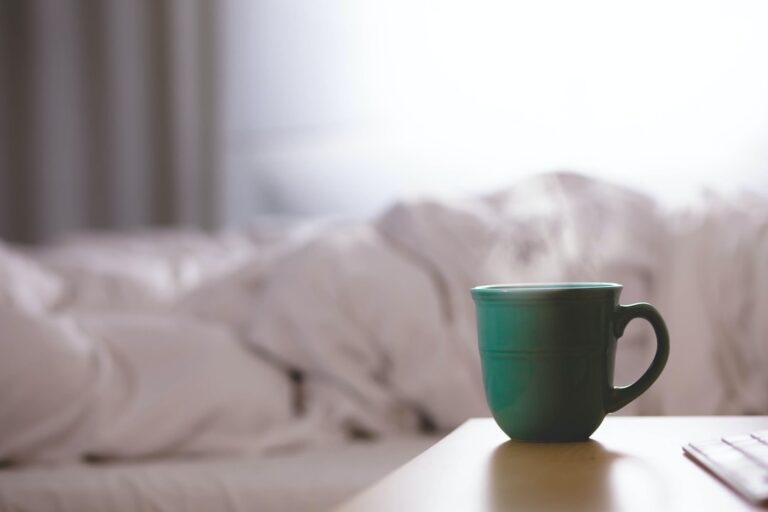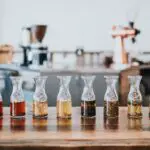Support our educational content for free when you purchase through links on our site. Learn more
Do Biodegradable Tea Bags Really Enhance Flavor and Reduce Environmental Impact? 🌱

When it comes to tea, we often focus on the flavor, aroma, and the comforting ritual of brewing. But have you ever stopped to consider the impact of your tea bag? In a world increasingly aware of plastic pollution, the question arises: do biodegradable tea bags make a difference in the flavor and environmental impact of tea? This article dives deep into the nuances of tea bag materials, exploring how they affect not only your sipping experience but also our planet. Spoiler alert: the answer might surprise you!
Did you know that a single plastic tea bag can release over 11 billion microplastics into your cup? 😱 With such alarming statistics, it’s crucial to understand the implications of our choices. As we unravel the relationship between biodegradable tea bags and both flavor and sustainability, you’ll discover how making the switch can elevate your tea experience while contributing to a healthier planet.
Key Takeaways
- Flavor Matters: Biodegradable tea bags made from natural fibers enhance the tea’s true flavors without the interference of plastic.
- Environmental Impact: Traditional tea bags contribute to plastic pollution, while biodegradable options break down more easily and reduce waste.
- Health Considerations: Choosing biodegradable tea bags can help mitigate the risks associated with microplastic ingestion.
- Best Choices: Brands like Pukka, Bigelow, and Harney & Sons offer eco-friendly tea bags that maintain flavor integrity.
Ready to make a change? 👉 Shop eco-friendly tea bags and elevate your tea-drinking experience today! 🌍🍵
Table of Contents
- Quick Tips and Facts
- The Impact of Biodegradable Tea Bags on Flavor and Environment
- A Brief History of Tea Bags and Sustainability
- Health Risks Posed by Microplastics in Tea Bags
- How Are Tea Bags Manufactured?
- So, Why is There Plastic in Tea Bags?
- List of Plastic-Free Tea Bags and Brands Using Plastic
- Barry’s Tea
- Bromley Tea
- Bigelow Tea
- Bushells
- Celestial Seasonings
- Dilmah
- Harney & Sons
- Higher Living Organic Tea Australia
- Ito En
- Lidl UK – Deluxe Tea
- Lidl USA
- Lipton
- Lyons
- Madame Flavour Australia
- Madura Australia
- Nature’s Cuppa Organic Tea
- Nerada Australia
- Pukka
- Qi Tea Australia and New Zealand
- Stash Tea
- Teapigs
- Tetley
- Twinings
- Uncle Lee Tea
- Vahdam
- Yorkshire Tea
- Common Questions About Biodegradable Tea Bags
- Conclusion: Choose Loose Leaf Tea if Possible with Non-Toxic Tea Infusers
- Recommended Links
- Reference Links
Quick Tips and Facts (#quick-tips-and-facts)
- ✅ Always check the tea bag material: Look for terms like “plastic-free,” “biodegradable,” “compostable,” or specific materials like “abaca” or “PLA.” If a brand’s packaging is unclear, their website often provides more details. You can also find helpful information on our best tea bag brands article.
- ✅ Consider loose leaf tea: For the most eco-friendly and often higher-quality option, choose loose leaf tea and a reusable tea infuser.
- ✅ Composting tea bags: Not all tea bags are created equal! While some are fully compostable in your backyard, others might require industrial composting facilities. Always double-check those labels! 🌿
- ❌ Don’t be fooled by “natural” claims: Some tea bags might be marketed as “natural” but still contain plastic. Always investigate the materials list! 🕵️♀️
- 🤯 Microplastics are tiny but mighty: These minuscule particles, released from some tea bags, can end up in our bodies and the environment. Let’s choose tea that’s good for us and the planet! 🌍
The Impact of Biodegradable Tea Bags on Flavor and Environment (#the-impact-of-biodegradable-tea-bags-on-flavor-and-environment)
Ah, tea! The elixir of life, the perfect pick-me-up, the comforting companion to a good book. ☕📚 But as we sip and savor our favorite blends, it’s crucial to consider the impact of our tea choices, even down to the humble tea bag.
Here at Tea Brands™, we’re passionate about delivering the most exquisite tea experiences, and that includes promoting sustainable practices. So, do biodegradable tea bags truly make a difference? Let’s dive in!
Flavor: Does Biodegradable Mean Better Taste? 👅
You might be surprised to learn that the material of your tea bag can subtly influence the flavor of your tea.
-
Traditional tea bags, often containing plastic, can sometimes impart a slight “plastic” taste, especially if over-steeped. This is due to the release of volatile organic compounds (VOCs) from the plastic when heated. 🌡️
-
Biodegradable tea bags, on the other hand, are typically made from natural fibers like abaca, cellulose, or PLA (polylactic acid, a plant-based plastic). These materials are less likely to affect the taste, allowing the tea’s true flavors and aromas to shine through. ✨
However, it’s important to note that the quality of the tea itself plays a significant role in taste. A high-quality tea, even in a traditional tea bag, will generally taste better than a low-quality tea in a biodegradable bag.
Environment: Sipping Sustainably 🌎
The environmental impact of our tea consumption is a growing concern. Traditional tea bags, with their plastic components, contribute to plastic pollution, which harms wildlife and takes hundreds of years to decompose.
Biodegradable tea bags offer a more sustainable alternative. They break down naturally in composting systems, reducing our environmental footprint.
Here’s a closer look at the environmental benefits:
- Reduced Plastic Waste: Biodegradable tea bags decompose into natural materials, minimizing plastic waste in landfills and oceans.
- Lower Carbon Footprint: The production of biodegradable materials often requires less energy and resources compared to traditional plastics.
- Compostable Goodness: Many biodegradable tea bags can be composted in your backyard, returning nutrients to the soil.
A Brief History of Tea Bags and Sustainability (#a-brief-history-of-tea-bags-and-sustainability)
Believe it or not, the tea bag, as we know it, is a relatively recent invention. Its origins can be traced back to the early 20th century, with various claims and patents surrounding its invention.
-
Early Days: Initially, tea bags were often made from silk or gauze, but these materials proved to be quite expensive.
-
The Rise of Paper: Paper emerged as a more cost-effective alternative, and by the mid-20th century, paper tea bags had become increasingly popular.
-
Plastic Enters the Scene: To improve durability and prevent the bags from falling apart during brewing, manufacturers began incorporating plastic fibers, typically polypropylene (PP), into the paper.
-
Sustainability Concerns Arise: As awareness of plastic pollution grew, so did concerns about the environmental impact of traditional tea bags.
-
The Biodegradable Revolution: In response to these concerns, many tea companies started exploring and adopting biodegradable materials, such as PLA and plant-based fibers, for their tea bags.
This shift towards sustainability is an ongoing journey, and we, as tea enthusiasts, have a role to play in supporting brands that prioritize eco-friendly practices.
Health Risks Posed by Microplastics in Tea Bags (#health-risks-posed-by-microplastics-in-tea-bags)
The presence of microplastics in our environment and food chain is a growing concern, and tea bags, particularly those containing plastic, have come under scrutiny.
What are Microplastics?
Microplastics are tiny plastic particles, typically less than 5 millimeters in size, that result from the breakdown of larger plastic items or are manufactured for specific applications, such as microbeads in cosmetics.
How Do Microplastics End Up in Tea?
When plastic-containing tea bags are steeped in hot water, they can release microplastics into the beverage. A 2019 study by McGill University found that a single plastic tea bag steeped at 95°C released billions of microplastic particles into the water.
Potential Health Risks
While more research is needed to fully understand the long-term health effects of microplastic ingestion, studies suggest potential risks, including:
- Inflammation: Microplastics can trigger inflammatory responses in the body.
- Hormonal Disruption: Some plastics contain endocrine-disrupting chemicals, which can interfere with hormone function.
- Cellular Damage: Microplastics may cause oxidative stress and damage to cells.
- Gut Microbiome Disruption: Research suggests that microplastics can alter the balance of bacteria in the gut, potentially impacting digestion and overall health.
Minimizing Your Risk
- Choose Plastic-Free Tea Bags: Opt for tea bags made from biodegradable materials like PLA, abaca, or cellulose.
- Consider Loose Leaf Tea: Eliminate tea bags altogether by switching to loose leaf tea and using a reusable infuser.
- Support Sustainable Brands: Choose tea brands that prioritize eco-friendly practices and transparency in their packaging.
How Are Tea Bags Manufactured? (#how-are-tea-bags-manufactured)
Ever wondered how those little pouches of tea goodness are made? The process is surprisingly intricate, involving specialized machinery and careful material selection. Let’s take a peek behind the scenes!
1. Blending and Grinding: First, tea leaves are blended to achieve the desired flavor profile. For tea bags, the leaves are typically ground into smaller pieces, known as fannings or dust, which allows for quicker brewing.
2. Tea Bag Material: This is where the sustainability factor comes in! Manufacturers choose from various materials, including:
* **Paper:** Traditional paper tea bags often contain plastic (usually PP) for heat sealing and durability.
* **Biodegradable Plastics (PLA):** PLA, derived from plant starch, is a popular biodegradable alternative to traditional plastics.
* **Plant-Based Fibers:** Materials like abaca (a type of banana leaf fiber) and cellulose (derived from wood pulp) are naturally biodegradable and compostable.
3. Tea Bag Forming: Specialized machines form the tea bags, filling them with the precise amount of tea. The bags are then sealed, typically using heat or ultrasonic welding.
4. Tagging and Stringing (Optional): Some tea bags have tags and strings attached for convenience. The materials used for these components can also vary in terms of sustainability.
5. Packaging: Finally, the tea bags are packaged, often in individual sachets for freshness and convenience. Again, the packaging materials can range from plastic to more eco-friendly options like paper or compostable films.
So, Why is There Plastic in Tea Bags? (#so-why-is-there-plastic-in-tea-bags)
It seems counterintuitive, doesn’t it? Adding plastic to a product designed for steeping in hot water. However, there are a few reasons why plastic has become so prevalent in tea bag manufacturing:
-
Heat Sealing: Plastic, particularly polypropylene (PP), melts at a relatively low temperature, making it ideal for heat sealing tea bags. This creates a strong, watertight seal that prevents the tea from leaking out during brewing.
-
Durability: Plastic fibers add strength and durability to the tea bag paper, preventing it from tearing or disintegrating in hot water.
-
Cost-Effectiveness: Plastic is often a more cost-effective material compared to some biodegradable alternatives.
However, as awareness of the environmental and potential health risks associated with plastic grows, many tea companies are transitioning to more sustainable materials.
List of Plastic-Free Tea Bags and Brands Using Plastic (#list-of-plastic-free-tea-bags-and-brands-using-plastic)
Navigating the world of tea bags can feel like a quest for the Holy Grail, especially when you’re trying to avoid plastic. Fear not, fellow tea lovers! We’ve compiled a comprehensive list of tea brands and their tea bag materials to help you make informed choices.
Please note: This list is based on information available at the time of writing and may not reflect the most up-to-date practices of all brands. Always check product packaging for the most accurate information.
Barry’s Tea (#barrys-tea)
- Plastic-Free Options: ✅ Yes, for their black tea range made in Cork, as well as their Fruit, Herbal, and Green teas.
- Materials: PLA, abaca, and cellulosic fibers.
- 👉 Shop Barry’s Tea on: Amazon
Bromley Tea (#bromley-tea)
- Plastic-Free Options: ✅ Yes
- Materials: Tea bag paper made from wood pulp, heat-sealed without glue or plastics; compostable.
- 👉 Shop Bromley Tea on: Amazon
Bigelow Tea (#bigelow-tea)
- Plastic-Free Options: ✅ Yes, over 90% of their tea bags use non-heat seal paper.
- Materials: Non-heat seal paper made of wood pulp and abaca fiber. The remaining tea bags use heat seal paper made of wood pulp and plant-based PLA.
- 👉 Shop Bigelow Tea on: Amazon | Walmart
Bushells (#bushells)
- Plastic-Free Options: ❌ No
- Materials: Manila hemp, cellulose, and thermoplastic fibers; not compostable or recyclable.
- 👉 Shop Bushells Tea on: Amazon
Celestial Seasonings (#celestial-seasonings)
- Plastic-Free Options: ✅ Yes, for TeaWell products, food-service style products, and certified organic Canadian teas.
- Materials: Pillow tea bags contain food-grade polypropylene plastic fibers. Plastic-free options use tea bag paper with no plastic fibers, string, tag, staple, and individual wrapper.
- 👉 Shop Celestial Seasonings on: Amazon | Walmart
Dilmah (#dilmah)
- Plastic-Free Options: ✅ Yes, for tagless tea bags and pyramid style Exceptional Tea Selection range.
- Materials: Biodegradable PLA material for plastic-free options. Standard teabags contain 2% polypropylene fibers for the heat seal.
- 👉 Shop Dilmah Tea on: Amazon | Walmart
Harney & Sons (#harney–sons)
- Plastic-Free Options: ✅ Yes, for paper tea bags. Sachet fabric tea bags are transitioning to compostable sugarcane.
- Materials: Compostable paper tea bags with no epichlorohydrin, PET, or PLA. Sachet fabric tea bags are made with BPA-free food-grade nylon and transitioning to compostable sugarcane.
- 👉 Shop Harney & Sons on: Amazon | Harney & Sons Official Website
Higher Living Organic Tea Australia (#higher-living-organic-tea-australia)
- Plastic-Free Options: ✅ Yes
- Materials: Compostable, plastic-free tea bags made of unbleached paper with organic cotton string.
- 👉 Shop Higher Living Tea on: Amazon
Ito En (#ito-en)
- Plastic-Free Options: ✅ Yes, for Oi Ocha Green Tea and Hoji Tea Bags.
- Materials: Just paper with no glue for plastic-free options. Matcha Green Tea Traditional uses BPA-free PET or nylon mesh with food-grade glue.
- 👉 Shop Ito En Tea on: Amazon | Walmart
Lidl UK – Deluxe Tea (#lidl-uk–deluxe-tea)
- Plastic-Free Options: ✅ Yes
- Materials: Biodegradable tea bags made of cellulose fibers and polylactic acid (PLA).
Lidl USA (#lidl-usa)
- Plastic-Free Options: ❌ No
- Materials: Filter paper made from a blend of cellulose fibers (wood pulp), Abaca, acrylic binder, and PAE (Poly-Amide-Epichlorohydrin) as a wet strength plastic resin.
Lipton (#lipton)
- Plastic-Free Options: ✅ Yes, for Quality Black and Intense Quality Black Tea traditional tea bags and Lipton Cold Brew Tea Bags.
- Materials: Compostable (but not recyclable) traditional tea bags for Quality Black teas. Lipton Cold Brew Tea Bags are made of plant-based biodegradable PLA material. Lipton Green Decaf, Chai and Herbal traditional tea bags are not compostable or recyclable.
- 👉 Shop Lipton Tea on: Amazon | Walmart
Lyons (#lyons)
- Plastic-Free Options: ❌ No
- Materials: Plant-based tea bags made of natural fibers, including abaca, cellulose fibers, and a small amount (less than 5%) of plastic fibers.
- 👉 Shop Lyons Tea on: Amazon
Madame Flavour Australia (#madame-flavour-australia)
- Plastic-Free Options: ✅ Yes
- Materials: Pyramid bags made from Soilon (PLA corn-starch derived material).
Madura Australia (#madura-australia)
- Plastic-Free Options: ✅ Yes
- Materials: 100% natural plant-based PLA tea bag paper and tea bag componentry.
Nature’s Cuppa Organic Tea (#natures-cuppa-organic-tea)
- Plastic-Free Options: ✅ Yes
- Materials: Unbleached paper with no polymers or plasticizers, closed with a metal staple.
Nerada Australia (#nerada-australia)
- Plastic-Free Options: ❌ No
- Materials: Filter paper made from a blend of high-quality manila hemp, which contains a tiny percentage (less than 2%) of food-grade synthetic fibers.
Pukka (#pukka)
- Plastic-Free Options: ✅ Yes
- Materials: Tea bag paper made of abaca, wood pulps, and plant cellulose fibers, stitched with organic cotton.
- 👉 Shop Pukka Tea on: Amazon | Walmart
Qi Tea Australia and New Zealand (#qi-tea-australia-and-new-zealand)
- Plastic-Free Options: ✅ Yes
- Materials: Plastic-free and biodegradable tea bags. The tea bag paper has a high percentage of plant-fibers, is natural in colour (not bleached), and is free from glue and aluminum staples.
Stash Tea (#stash-tea)
- Plastic-Free Options: ✅ Yes
- Materials: Filter paper made from 100% cellulose fibers (wood), machine folded and pressed with no glue.
- 👉 Shop Stash Tea on: Amazon | Walmart | Target
Teapigs (#teapigs)
- Plastic-Free Options: ✅ Yes
- Materials: Tea bags (tea temples) are made from corn starch and paper.
- 👉 Shop Teapigs on: Amazon | Teapigs Official Website
Tetley (#tetley)
- Plastic-Free Options: ✅ Yes, for String and Tag tea bags used in Tetley Black and Tetley Green Tea.
- Materials: Natural fiber woven paper for String and Tag tea bags. Tetley Round Tagless tea bags are made from cellulose fibers (plant matter) with 25% food-safe plastic.
- 👉 Shop Tetley Tea on: Amazon | Walmart
Twinings (#twinings)
- Plastic-Free Options: ✅ Yes, for Australian string & tag tea bag formats and pyramid Infuser tea bags.
- Materials: Plant-based and biodegradable materials for string & tag tea bags. Pyramid Infuser tea bags are made from PLA.
- 👉 Shop Twinings Tea on: Amazon | Walmart
Uncle Lee Tea (#uncle-lee-tea)
- Plastic-Free Options: ✅ Yes
- Materials: All teabags are made out of abaca fibers and soft wood pulp fibers with no plastics or glue.
Vahdam (#vahdam)
- Plastic-Free Options: Currently working on plant-based options.
- Materials: Tea bags are currently made of food-grade nylon mesh.
- 👉 Shop Vahdam Tea on: Amazon | Vahdam Official Website
Yorkshire Tea (#yorkshire-tea)
- Plastic-Free Options: ✅ Yes, for most tea bags.
- Materials: Plant-based materials for most tea bags.
- 👉 Shop Yorkshire Tea on: Amazon
Common Questions About Biodegradable Tea Bags (#common-questions-about-biodegradable-tea-bags)
Let’s tackle some frequently asked questions about these eco-friendly tea companions:
What is PLA Bio-Plastic or Polylactic Acid? (#what-is-pla-bio-plastic-or-polylactic-acid)
PLA, short for polylactic acid, is a plant-based bioplastic made from renewable resources like cornstarch or sugarcane. It’s often used as a biodegradable alternative to traditional petroleum-based plastics in various applications, including tea bags.
Does PLA Release Microplastics? (#does-pla-release-microplastics)
While PLA is designed to biodegrade, recent research suggests that it might still release microplastics during the degradation process. However, more research is needed to fully understand the extent and potential implications of this.
Are Plant-Based Bio-Plastic Tea Bags Made with PLA Compostable? (#are-plant-based-bio-plastic-tea-bags-made-with-pla-compostable)
PLA bio-plastic tea bags are designed to be compostable, but they might not break down completely in a typical backyard compost bin. They often require the higher temperatures and controlled environments found in industrial composting facilities.
Further Tip: Try to Tear Your Tea Bag! (#further-tip-try-to-tear-your-tea-bag)
Here’s a handy trick: try tearing your tea bag. If it tears easily, it’s more likely to be made from plant-based materials. If it’s difficult to tear or feels plasticky, it probably contains plastic.
Conclusion: Choose Loose Leaf Tea if Possible with Non-Toxic Tea Infusers (#conclusion-choose-loose-leaf-tea-if-possible-with-non-toxic-tea-infusers)

In the grand tea debate, the choice between biodegradable and traditional tea bags can feel overwhelming. However, the evidence is clear: biodegradable tea bags not only offer a more sustainable option but also enhance the flavor experience of your favorite brews. By opting for brands that prioritize eco-friendly practices, you can enjoy your tea while minimizing your environmental impact.
Positives:
- Flavor Integrity: Biodegradable tea bags, made from natural fibers, allow the true essence of the tea to shine through without the interference of plastic.
- Environmental Benefits: These bags break down more easily in composting systems, reducing plastic waste and pollution.
- Health Considerations: Choosing biodegradable options can help mitigate the risks associated with microplastic ingestion.
Negatives:
- Availability and Cost: Biodegradable tea bags may not be as widely available as traditional options, and they can sometimes be more expensive.
- Composting Requirements: Not all biodegradable bags will break down effectively in backyard compost; some require industrial composting facilities.
In conclusion, while biodegradable tea bags are a step in the right direction, the best choice for both flavor and sustainability is to switch to loose leaf tea whenever possible. Pair it with a non-toxic tea infuser, and you’ll be sipping sustainably in no time! 🌱
Recommended Links (#recommended-links)
- 👉 Shop Barry’s Tea on: Amazon | Barry’s Official Website
- 👉 Shop Bigelow Tea on: Amazon | Bigelow Official Website
- 👉 Shop Pukka Tea on: Amazon | Pukka Official Website
- 👉 Shop Harney & Sons on: Amazon | Harney & Sons Official Website
- 👉 Shop Yorkshire Tea on: Amazon | Yorkshire Tea Official Website
- Explore Eco-Friendly Tea Books on Amazon: Eco-Friendly Tea Books
FAQ (#faq)

Are non-biodegradable tea bags harmful to the environment and human health due to microplastic release? (#are-non-biodegradable-tea-bags-harmful-to-the-environment-and-human-health-due-to-microplastic-release)
Yes, non-biodegradable tea bags, especially those made with plastic fibers, can release microplastics into the tea during brewing. A 2019 study found that a single plastic tea bag could release 11.6 billion microplastics into a cup of tea. These microplastics can accumulate in the human body and the environment, potentially leading to health risks such as inflammation and hormonal disruption. Therefore, opting for biodegradable or plastic-free tea bags is a healthier choice for both you and the planet.
How do biodegradable tea bags compare to traditional tea bags in terms of cost and availability for tea enthusiasts? (#how-do-biodegradable-tea-bags-compare-to-traditional-tea-bags-in-terms-of-cost-and-availability-for-tea-enthusiasts)
Biodegradable tea bags can sometimes be more expensive than traditional tea bags due to the cost of sustainable materials and production processes. However, as consumer demand for eco-friendly products grows, more brands are entering the market, increasing availability. Many tea enthusiasts are willing to pay a premium for products that align with their values, making biodegradable options increasingly accessible.
What are the most eco-friendly tea bags available in the market, and do they preserve the flavor and aroma of specialty teas? (#what-are-the-most-eco-friendly-tea-bags-available-in-the-market-and-do-they-preserve-the-flavor-and-aroma-of-specialty-teas)
Some of the most eco-friendly tea bags include those from brands like Pukka, Harney & Sons, and Bigelow, which utilize biodegradable materials like PLA and natural fibers. These bags generally preserve the flavor and aroma of specialty teas better than traditional plastic tea bags, allowing for a more authentic tea-drinking experience.
Can switching to biodegradable or compostable tea bags contribute to a more sustainable tea-drinking habit and reduce waste in the tea industry? (#can-switching-to-biodegradable-or-compostable-tea-bags-contribute-to-a-more-sustainable-tea-drinking-habit-and-reduce-waste-in-the-tea-industry)
Absolutely! Switching to biodegradable or compostable tea bags can significantly reduce plastic waste and contribute to a more sustainable tea-drinking habit. By choosing brands that prioritize eco-friendly practices, you support a shift in the industry towards more sustainable production methods. This collective consumer action can lead to a positive impact on the environment and encourage more companies to adopt greener practices.
Reference Links (#reference-links)
- McGill University Study on Microplastics in Tea
- The Tea Spot: Plastic in Tea Bags
- The Good Boutique: Environmental Impact of Tea
- Implastic Free: Why You Should Switch to Plastic-Free Tea Bags
- Environmental Science & Technology Journal
By making informed choices, we can all enjoy our tea while being mindful of our health and the environment! Cheers to that! 🍵✨



